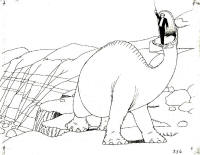Imaging my surprise when I opened up my newspaper and learned about the unveiling of the first of 25 Community Legends in Grand Rapids, MI.
Lucius Lyon, a city founder, was created by world-renowned artist Stuart
Williamson and has been installed at the southwest corner of Monroe Avenue NW
and Lyon Street, near the Amway Grand Plaza Hotel.
Known as the "Community Legends" project, the effort is intended to commission one sculpture every two years for the next 50 years. Those pieces then would be donated to the city, or a nonprofit, and funded and endowed by Secchia and his family.
The next four sculptures have been chosen.
• Ottawa Indian Chief Nawquageezhig (Noonday), who helped open Michigan to
settlement.
• Helen Claytor, a local civil rights leader.
• Stanley
Ketchel, a city native and Hall of Fame boxer.
• The Most Rev. Frederick
Baraga, who funded a Grand Rapids church and school.
Isn't that fantastic! I must admit, the unveiling was the first time I had heard about project.
But it wasn’t the first time I had thought about the concept.
My five faithful readers know of my wish for a Buster Keaton statue. Others have heard me mention my thoughts of expanding the concept beyond to include others who once called Muskegon home.
To steal a phrase, my view is to "Think Globally, Act Locally."
As a historian, with definite Pop Culture leanings, my thoughts have been to honor those who have touched the world.
Names I’ve tossed around, beside Keaton, have included (in no particular order):
Haddon Sundblom, the illustrator who created our modern day concept of Santa during his days working for Coca Cola.
Sherm Poppen, and his invention, the Snurfer, which evolved into the Snowboard. Harry Morgan, Colonel Sherman T. Potter on M.A.S.H. (my favorite episode Dear Sigmund from Season 5).
Harry Morgan, Colonel Sherman T. Potter on M.A.S.H. (my favorite episode Dear Sigmund from Season 5).
Iggy Pop, the father of Punk, born in Muskegon.
Bob Zuppke, the University of Illinois football mentor who got his start at Muskegon High School.
Bennie Oosterbaan, Muskegon grad and three-time All-American in football, who spent a lifetime helping develop athletics at the University of Michigan.
Jonathan Waker - the man with the branded hand.
Each, in some way, brought joy to the world.
Over time, I learned of other’s ideas for adding art to the area’s public spaces. To honor Muskegon’s lumbering heritage, Dr Richard Kislov pictured a lumberjack stationed in the waters of Muskegon Lake.
Kislov’s vision of St. Paul, the apostle, resides high above the ground at St Paul's Episcopal Church in downtown Muskegon,
A figure of a bearded and barefoot St. Paul, standing in
a shallow niche on church facade. His proper left hand is upraised and
pointing to the cross that tops the arched niche. His proper right hand holds a
scroll with Greek inscriptions. A sword lies near his feet. He stands atop a
shield that forms the base. The patina of the sculpture is antique green.
The redevelopment of the downtown area has spurred interest in featuring sculptures.
A piece created by James Clover, Sculpture with Stars previously featured on the old SPX headquarters location now rests at a new location in front of the Post Office building.
Plans for a piece honoring Muskegon’s greatest benefactor, Charles Hackley, is in the works for the downtown area thanks to a donation from Peter Turner.
With efforts to honor Winsor McCay now in full swing, Spring Lake is now investigating the creation of sculptures to highlight his pioneering animation works.
Holland, MI, just down the road apiece, has added sculpture in their downtown area.
Grand Rapids, of course has Fredrick Meijer Gardens.
Art has been added along the Hart-Montague bike trail.
Wouldn't it be wonderful of the area as a whole were known nationally for their public displays of sculpture?
Let me hear your suggestions...





















![[winsor.gif]](http://www.actorscolony.com/winsor.jpg)










